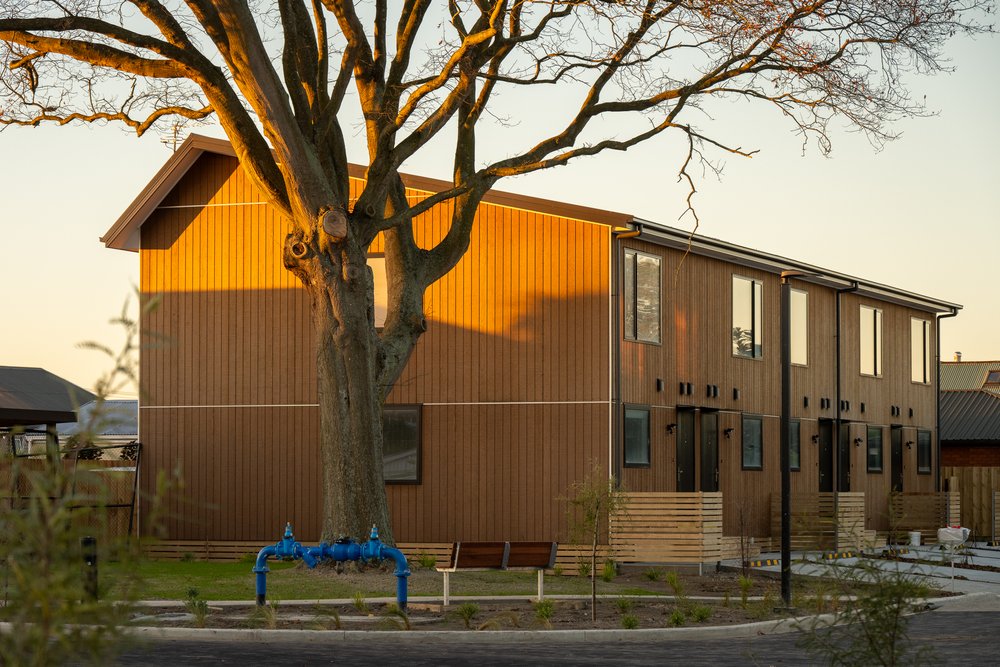Tens of thousands more New Zealanders could find it easier to purchase their own home if barriers to shared ownership models are removed, a new report says.
The report, produced by Deloitte for Westpac NZ, calls for the development of a long-term affordable housing strategy by the Government, as well as greater funding for such projects from public and private sources.
Shared equity, leasehold and rent-to-own models are slowly growing in popularity as alternative pathways to homeownership for people unable to save enough money for a deposit on a traditional purchase.
The report says 53,000 households will be eligible and ※sufficiently aware§ of shared ownership pathways to take advantage of the concept, a figure that could rise by a further 100,000 households if public awareness is improved.
However, existing community housing providers and others working in the space are battling with a lack of funding and high borrowing costs.
※Many felt that, due to their non-profit status, bank lending often involved protracted negotiation - if banks were in fact willing to lend at all.§
Government grants for such schemes can be complex to understand and time-consuming to complete, while there is little long-term certainty about funding.
※As one provider put it, &Government funding is irregular, erratic, lumpy and is turned off fast’.§
If immediate barriers are removed, the report estimates another 10,000 shared ownership properties could be built within three years.
Westpac NZ chief executive Catherine McGrath told Newsroom the bank had been working with community housing providers and iwi groups on shared home ownership programmes for some time, and believed the sector could benefit from greater public awareness and building a ※coalition of the willing§.
McGrath said some banks were uncertain about funding shared home ownership projects given their lack of experience compared with more traditional developments, but Westpac’s own record showed such fears could be overcome.
※It’s been important for us to learn and change along with them: you just have to have that willingness to say the ways that you’ve done things for the last 100 years aren’t necessarily going to be the ways that you do things moving forward.§
As part of its response to the report, Westpac had set a lending target of at least $1 billion for affordable housing over the next three years - both home loans to prospective buyers and lending to scheme providers - and McGrath said she would ※love to do a lot more§.
&Once people see that you’re in a better financial position if you’re in our programme than if you’re renting on the free market, then it’s a really very simple no-brainer&
- Julie Scott, Queenstown Lakes Community Housing Trust
One example of shared home ownership at work is the Secure Home programme run by the Queenstown Lakes Community Housing Trust since 2019.
Under the scheme, a buyer pays for the home’s construction costs and the trust holds a 100-year lease over the land in the buyer’s name, charging a monthly ground rent that is adjusted each year in line with inflation. A buyer can sell their home back to the trust for the price they paid for it, plus an inflation adjustment for the period of time they had owned the property.
Trust chief executive Julie Scott told Newsroom the organisation had previously run a separate shared equity programme, but the rising cost of housing in the region meant it was more expensive to operate, and the leasehold model was an attractive alternative.
Scott said it had taken some time to tackle the ※stigma§ associated with leasehold properties in New Zealand, with the trust’s 100-year lease longer than the term for past projects.
※Once people see that you’re in a better financial position if you’re in our programme than if you’re renting on the free market, then it’s a really very simple no-brainer.§
The trust had worked to get banks on side with lending to households for the programme, first with SBS then Westpac, and had previously had to pay commercial rates for its own lending to finance the construction projects.
With 1300 eligible households on its waiting list, she said there was plenty of demand that could be met with improved access to capital.
Long-term government support was also vital, with Scott advocating for the Progressive Home Ownership Fund established under the Labour government to be made permanent.

In Christchurch, the otautahi Community Housing Trust has adopted the Secure Home model for its own work, opening a new mixed-tenure development in Somerfield last month with five leasehold homes for sale and another 35 community and affordable market rentals.
otautahi Community Housing Trust chief executive Cate Kearney told Newsroom the organisation had been looking for ways to increase its ownership stock as well as rental properties, and the leasehold model retained affordability while stopping buyers from making ※windfall§ profits if they sold the home in future.?
Kearney said the trust had been working hard to communicate the nature of the leasehold model in its marketing materials and to its existing pool of tenants, while it had been able to use Queenstown Lakes’ documentation to streamline the process.
She was keen to see more institutional investors backing such projects, given they were a strong investment that also provided social benefits, freeing up public housing and reducing waitlists by moving people into their own homes.
Kearney was also supportive of a long-term strategy for affordable housing across New Zealand, with the trust already involved in work on a joint action plan with Christchurch, Selwyn, and Waimakariri councils.


